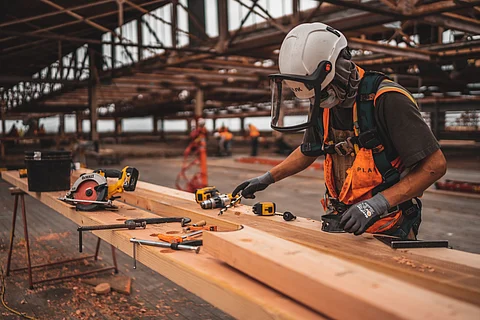
- Home
- न्यूजग्राम
- India
- World
- Politics
- Entertainment
- Culture
- Lifestyle
- Economy
- Sports
- Sp. Coverage
- Misc.
- NewsGram Exclusive
- Jobs / Internships

When a structure is built, it’s not always clear how it will respond to environmental changes. However, concrete monitoring identifies any weak spots or potential problems before they become major.
Monitoring Systems
By : Isabella Thomas
In the past, large structures used to be constructed manually, with no clear method or process for ensuring that the end product was stable and safe. Today, advances in concrete monitoring have made it possible to build stronger, more efficient structures that are safer. Below are ways these systems are revolutionizing the construction industry.
Automated Strength Testing
With Concrete Monitoring Systems, concrete strength testing is automated and done remotely. This eliminates the need for manual tests, which are time-consuming and difficult to do accurately.
Automated testing also provides more accurate results, as computers detect even the slightest changes in the strength of a structure’s material over time. Additionally, automated testing detects structural issues early in the building process, allowing for quick and efficient repairs before the structure is complete.
Improved Maintenance and Repair Processes
When a structure is built, it’s not always clear how it will respond to environmental changes. However, concrete monitoring identifies any weak spots or potential problems before they become major. By taking regular measurements of the structure and its materials, these systems detect small shifts that may indicate damage or degradation over time. This allows for more efficient maintenance and repair processes, as any necessary repairs are identified and completed quickly before any additional damage is done. This saves time, money, and resources.
Improved Safety Standards
Concrete monitoring also allows for improved safety standards because of their ability to accurately detect structural flaws from afar. Monitoring all aspects of a building’s construction makes it possible to detect any potential problems before they become major safety issues. This reduces the risk of accidents or injuries caused by a weak structure. The improved safety also applies to large-scale projects such as bridges and dams. Monitoring the structures from the beginning and throughout their lifespan makes it much easier to identify potential risks and take corrective action if needed.
Real-Time Structural Analysis
Structural analysis is an important part of building construction and maintenance. With concrete monitoring, structural analysis is done in real time with more accurate results. This allows quick responses to any problems that may arise and ensures the safety of those who use the structure.
In addition, real-time analysis allows for better planning for repairs or improvements. This is especially important when structures are located in remote areas, as they can be monitored without sending people out on-site.
Reduced Construction Costs
These monitoring systems reduce construction costs by providing a more efficient and accurate way to build structures and complete maintenance tasks. Automated tests are much faster than manual ones and don’t require any additional personnel to be present on-site.
Also, by detecting potential problems early in the process, making necessary repairs before they become major issues that could result in costly delays or added expenses is easier. This helps keep projects running smoothly with fewer unexpected costs along the way.
Increased Building Durability
Structure durability is an important factor in any construction project, and concrete monitoring can help increase the lifespan of structures. Monitoring a building’s materials over time makes it possible to detect any weak spots that could eventually lead to structural failure.
Additionally, these systems can be used to make sure the structure is able to withstand natural disasters such as storms or floods. This helps reduce damage and disruption due to extreme weather conditions and allows for more reliable operation.
Concrete monitoring provides many benefits to the construction industry, including reduced costs, improved safety standards, and increased building durability. In addition, monitoring allows for better maintenance processes and real-time structural analysis to identify potential problems before they become major issues. For these reasons, concrete monitoring is invaluable for any construction project. [GP/JS]
